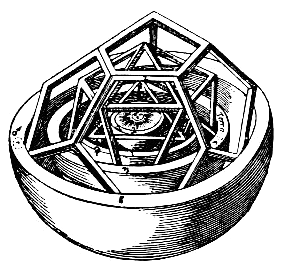Concentric facts for kids
In geometry, objects are called concentric when they share the exact same center point. Imagine a target for target archery; all the circles on it have the same center, so they are concentric.
Sometimes, objects are called coaxial or coaxal if they share the same central axis. Think of a set of pipes, one inside the other, all running along the same imaginary line.
Circles, regular polygons (like a square or hexagon), regular polyhedra (3D shapes like a cube), and spheres can all be concentric if they have the same center point. Cylinders can be coaxial if they share the same central line.
Contents
What are Concentric Shapes?
Concentric shapes are like Russian nesting dolls, but in 2D or 3D. They are different sizes but perfectly lined up around one central point or line.
Examples of Concentric Shapes
- Circles: The most common example is a target or the ripples in a pond. Each ripple gets bigger but starts from the same spot.
- Spheres: Imagine an onion. Each layer is a sphere, and they all share the same center. Planets orbiting a star can also be thought of as having paths (orbits) that are roughly concentric.
- Cylinders: A Coaxial cable is a great example. It has different layers of material, like wires and insulation, all wrapped around the same central line.
Where Can We See Concentric Shapes?
You can find concentric shapes all around you!
- Nature: When you drop a stone into still water, the ripples spread out as a series of concentric circles. Tree trunks also show concentric rings, with each ring representing a year of growth.
- Sports: Targets used in sports like target archery have many concentric circles. The goal is to hit the very center, or "bullseye."
- Technology: Coaxial cables, used for things like internet and TV, are designed with layers of material that are coaxial (sharing the same central axis) to carry signals efficiently. Some lenses in cameras or telescopes also use concentric designs.
- Art and Design: Artists often use concentric patterns to create interesting visual effects or to draw your eye to a central point.
Concentric and coaxial shapes are important ideas in geometry and help us understand how many things in our world are designed and organized.
See also
 In Spanish: Concéntrico para niños
In Spanish: Concéntrico para niños



